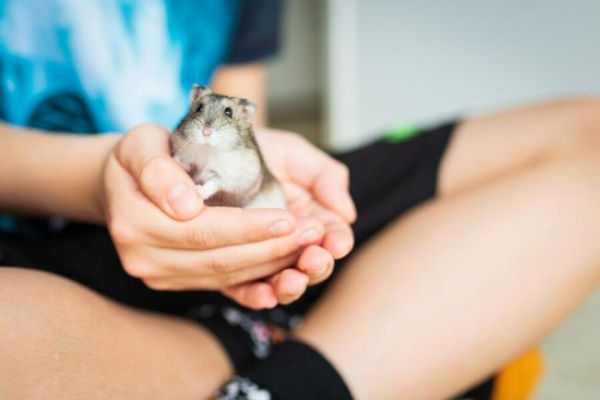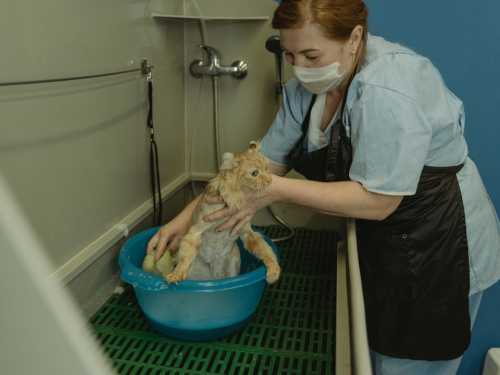
Currently, the most common hamsters found in Russian homes are Syrian hamsters, dwarf Djungarian hamsters, and Campbell's dwarf hamsters. Less common are Roborovski dwarf hamsters. And literally in isolated cases, mouse-like and dwarf Chinese hamsters. It is so difficult to find the young of the last two species anywhere that I will not consider them further.
Of course, all these types of hamsters differ significantly from each other. And even if we forget that each hamster is an individual, and it is not easy to generalize thousands of individuals into groups, each type still has its own characteristics, distinctive features that should be taken into account when choosing a pet.
Syrian hamsters are the largest of the species kept at home in our country. Hamsters sold in markets and pet stores usually grow into small Syrian hamsters, so the average weight of this species is often called about 100-140 grams, although in reality the weight of a Syrian hamster can reach 240 grams. Syrian hamsters have many colors, markings (white pattern, which can be on any color) and types of fur.
Most Syrian hamsters are sociable and can be tamed without any problems. They are smarter than other types of hamsters, and it is easy to train them to go to a special toilet, run to the owner at the sound of his voice or even his nickname.
The Syrian hamster needs to be handled daily, and not just during the time it is being tamed; these hamsters need to be walked outside the cage as often and as much as possible, as even a large cage is not enough to provide the Syrian hamster with the necessary physical activity.
Unfortunately, it is not easy to find accessories that are the right size for a Syrian hamster these days, especially if they are larger than average. They need fairly large houses and running wheels with a diameter of 18 cm or more, while almost all of the ones available for sale are designed for dwarf hamsters or small Syrians.
It is also important to remember that the Syrian hamster is a territorial animal, it should live alone, and if you want to watch the interaction of a pair of cute little animals, you should look for other pets.
The Syrian hamster requires a lot of time and attention, but in return it rewards its owner with boundless trust and a good memory and learning ability for a hamster.
Dwarf Djungarian hamsters are most often found in markets and pet stores under the code name “Djungarians”. However, sellers generously bestow this same code name on representatives of all other types of dwarf hamsters.
True Djungarian hamsters are often called “Sungur” or “Sungariks”. This is a small animal weighing about 40 grams, with a charming face, fairly large eyes and a “spherical” body. These dwarf hamsters look more like little pompoms than others, and they are often kept only because of their cute appearance.
Djungarian hamsters are the most sociable of the dwarf hamsters, and as pets they are not suitable for those who cannot set aside time to communicate with them every day. Currently, only one color of Djungarian hamsters is found in stores and markets – standard (natural), dark gray with a light belly, a dark stripe along the back and a dark diamond on the head.
Like Syrian hamsters, Djungarian hamsters cannot live in groups. Djungarian hamsters are excellent pets for those who are looking for a small, non-aggressive fur ball with a cute face in a hamster and are ready to devote enough time and attention to the hamster.
Campbell's dwarf hamsters are the very hamsters that are most often sold under the name “Djungarians”, often adding to it various “loud” adjectives that have nothing to do with the real names of the colors.
The Campbell's dwarf hamster is similar in appearance to the Djungarian hamster (especially if you do not carefully compare two individuals of different species), but Campbell's hamsters have many more colors common in Russia. In fact, if you see a colored (not dark gray) dwarf hamster, then it is a Campbell's hamster.
Not all Campbell's hamsters are sociable. Moreover, this species is considered the most aggressive of the dwarf hamsters common in Russia. Some individuals are tamed very quickly, but most Campbell's hamsters take a long time to tame, the process requires a lot of effort and patience.
However, this species of hamsters also has its own large army of fans. And this is not surprising: anyone who has personally seen the charming whiskered face of the Campbell's hamster knows how difficult it is to resist the charm of these animals!
Many hobbyists keep Campbell's hamsters as a “fluffy aquarium”: hamsters do not make contact with the owner, but watching them is hardly less interesting than watching aquarium fish. Campbell's hamsters are independent, do not need communication with the owner, so they are well suited for people who cannot devote much time to their pet every day.
Campbell's hamsters are territorial, they also cannot be kept in groups. This type of hamster is generally very sensitive to its home and selflessly protects it from encroachment by anyone, including the owner.
Roborovski dwarf hamsters are quite rare in our country, and this is largely due to the difficulties in breeding this species.
Roborovski hamsters are social, and unlike all other hamster species, they can and should be kept in pairs. But even if a pair of adult Roborovski hamsters of different sexes live together for a long time, this does not mean that they have had, have, or ever will have babies.
These dwarf hamsters are noticeably smaller than Djungarian and Campbell's hamsters, their average weight is 25-30 grams. Due to such an exceptionally small size, Roborovski hamsters cannot be kept in cages, only in terrariums.
In Russia, there is only one color of Roborovski hamsters, and they are not at all difficult to distinguish from other types of dwarf hamsters: Roborovski hamsters do not have a dark stripe along the back, and above the eyes there are noticeable, almost “Brezhnev-like”, white eyebrows.
If you dream of watching a pair of hamsters cohabit peacefully, then Roborovski hamsters are the only species that suits you. However, you should not expect love and trust from these hamsters to the owner – not all individuals are easily tamed and not all can be tamed at all.
Good luck with your choice to you and your pets!





